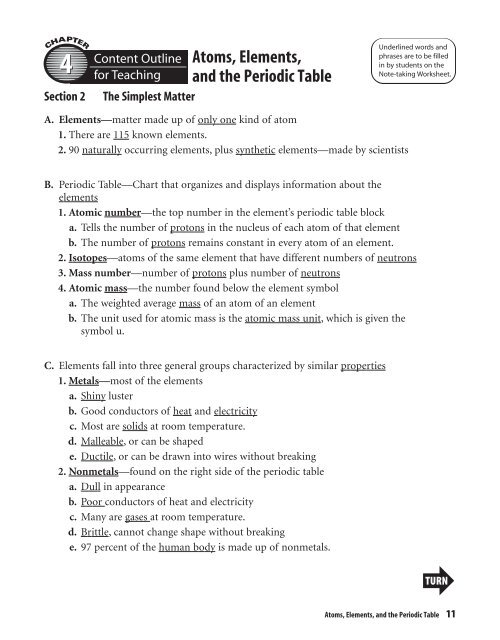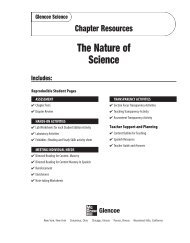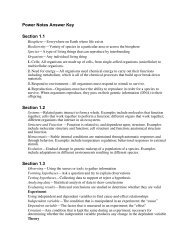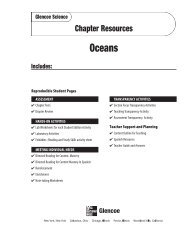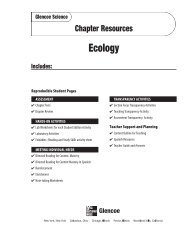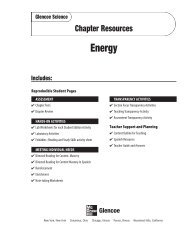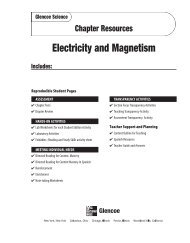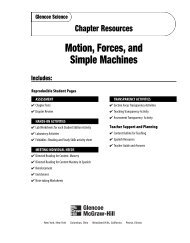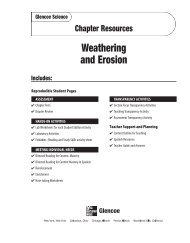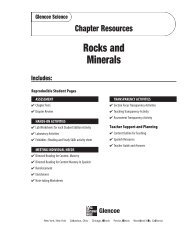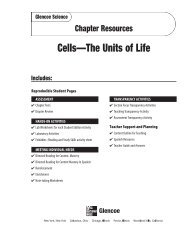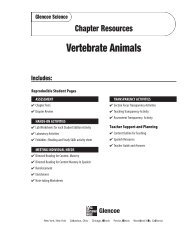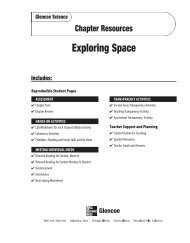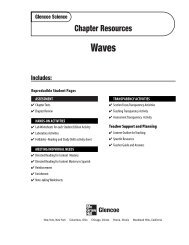Content Outline for Teaching - Potosi School District - Home
Content Outline for Teaching - Potosi School District - Home
Content Outline for Teaching - Potosi School District - Home
You also want an ePaper? Increase the reach of your titles
YUMPU automatically turns print PDFs into web optimized ePapers that Google loves.
4<br />
Section 2<br />
<strong>Content</strong> <strong>Outline</strong><br />
<strong>for</strong> <strong>Teaching</strong><br />
The Simplest Matter<br />
Atoms, Elements,<br />
and the Periodic Table<br />
Underlined words and<br />
phrases are to be filled<br />
in by students on the<br />
Note-taking Worksheet.<br />
A. Elements—matter made up of only one kind of atom<br />
1. There are 115 known elements.<br />
2. 90 naturally occurring elements, plus synthetic elements—made by scientists<br />
B. Periodic Table—Chart that organizes and displays in<strong>for</strong>mation about the<br />
elements<br />
1. Atomic number—the top number in the element’s periodic table block<br />
a. Tells the number of protons in the nucleus of each atom of that element<br />
b. The number of protons remains constant in every atom of an element.<br />
2. Isotopes—atoms of the same element that have different numbers of neutrons<br />
3. Mass number—number of protons plus number of neutrons<br />
4. Atomic mass—the number found below the element symbol<br />
a. The weighted average mass of an atom of an element<br />
b. The unit used <strong>for</strong> atomic mass is the atomic mass unit,which is given the<br />
symbol u.<br />
C. Elements fall into three general groups characterized by similar properties<br />
1. Metals—most of the elements<br />
a. Shiny luster<br />
b. Good conductors of heat and electricity<br />
c. Most are solids at room temperature.<br />
d. Malleable,or can be shaped<br />
e. Ductile,or can be drawn into wires without breaking<br />
2. Nonmetals—found on the right side of the periodic table<br />
a. Dull in appearance<br />
b. Poor conductors of heat and electricity<br />
c. Many are gases at room temperature.<br />
d. Brittle, cannot change shape without breaking<br />
e. 97 percent of the human body is made up of nonmetals.<br />
Atoms, Elements, and the Periodic Table 11


